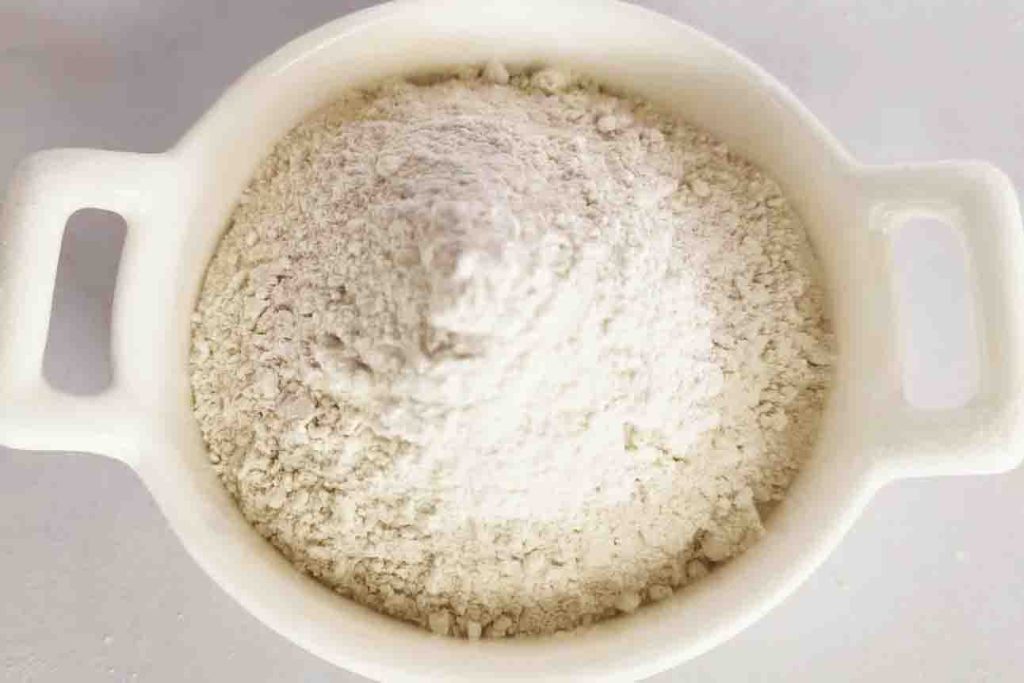Sodium Hexametaphosphate | SHMP 68915-31-1
What is Sodium Hexametaphosphate?
Sodium Hexametaphosphate is also known by its synonyms Graham’s salt Tech Grade. It is a chemical compound with the CAS number 10124-56-8. It is commonly a white powder or granules that dissolve easily in water. This is a compound made up of several phosphate groups that are connected together in a repeating pattern. Its molecular structure consists of a chain of six phosphate units. It is commonly mixed with organoclay as a dispersion agent. It prevents clay minerals to stick together.
Sodium Hexametaphosphate finds applications in various industrial processes, including paints and coatings production, and as a dispersing agent in oil well drilling. Its unique properties make it an indispensable ingredient in these industries. SHMP stands out as a compound with remarkable versatility and widespread usage.
History
Theodor Fleitmann, a German chemist, named hexametaphosphoric acid in 1849. It’s a type of polyphosphoric acid. Around 1956, researchers conducted additional studies and analyses on Graham’s salt, also referred to as sodium polyphosphate, during the mid-20th century. Graham’s salt is made up of several phosphate groups that are combined together. We found cyclic anions with more than four phosphate groups in the hydrolysates of Graham’s salt through chromatographic analysis.
This discovery gave us a better understanding of the makeup and arrangement of hexametaphosphoric acid. It is suggested that hexametaphosphoric acid is made up of cyclic anions that are formed by linking more than four phosphate groups. The unique properties and behavior of hexametaphosphoric acid are attributed to its cyclic structures.
What is the Preparation of Sodium Hexametaphosphate?
To make sodium hexametaphosphate, you need to heat up monosodium phosphate until it melts and forms a clear liquid. This transformation requires a temperature that is just a bit higher than 625°C. When synthesizing, the solid compound monosodium phosphate undergoes high temperatures.
When the temperature goes beyond 625°C, the monosodium phosphate changes from being solid to becoming molten. This melted form looks like a transparent liquid. Heating is very important to get the chemical change and make sodium hexametaphosphate.
Sodium Hexametaphosphate Structure
The molecular structure of Sodium Hexametaphosphate consists of a chain of phosphate units linked together. Each phosphate unit is composed of one phosphorus atom bonded to four oxygen atoms. The phosphate units are connected to each other through oxygen atoms, forming a linear chain.
The chemical formula for sodium hexametaphosphate of (NaPO3)n, where “n” is equal to 6, indicating that there are six phosphate units in the chain. The molecular structure of sodium hexametaphosphate can be visualized as a cyclic structure. It have an alternating phosphorus and oxygen atoms. The fourth oxygen atom forms a double bond with the phosphorus atom. The arrangement results in a negatively charged phosphate group within each unit.
The cyclic structure of Sodium Hexametaphosphate is formed by connecting the phosphate units end-to-end, with each phosphate unit sharing oxygen atoms with neighboring units. The sodium ions in Sodium Hexametaphosphate are attracted to the negatively charged phosphate groups, balancing the charge and providing stability to the compound.
Physical Properties of Sodium Hexametaphosphate
Sodium Hexametaphosphate appears as a white powder or particle. The sodium hexametaphosphate solubility in water is kept minimal, with a maximum value of 0.06%. The compound dissolves well in water.
It has a refractive index of 1.482. It usually appears transparent under the light because of this. The pH of sodium hexametaphosphate typically falls within the range of 5.8 to 7.3 which is considered optimal for many applications. Sodium hexametaphosphate powder is commonly odorless.
Chemical Properties of Sodium Hexametaphosphate
The amount of total phosphate content of sodium hexametaphosphate measured as P2O5 (phosphorus pentoxide), is at least 68.00%. It also contains non-active phosphate. The content of non-active phosphate is kept below or equal to 7.50%.
The presence of iron is limited. It has an iron content of no more than 0.005%. It has a density of 2.48grams per cubic meter. Its molecular we 611.77 grams per molecule, makes sodium hexametaphosphate dispersing agent perfect together with organoclay that is used in oil field drilling. Sodium hexametaphosphate also has a boiling point of 1500°C, and this characteristic also adds value in its use with organoclay. It has a melting point of 628°C.
Applications of Sodium Hexametaphosphate
Sodium Hexametaphosphate uses in paint and coating formulations for its sequestering, dispersing, and deflocculating properties. It helps to improve the stability of the paint by preventing the precipitation of pigments and fillers. It can act as a coating agent, forming a thin passivating film on metal surfaces, which provides protection against corrosion. It is widely employed in industrial water treatment processes as well. It acts as a powerful sequestering agent, effectively binding and inhibiting the formation of scale caused by metal ions such as calcium and magnesium.
It is used as an industrial cleaning agent to remove impurities and stains from textile materials and machinery. It can function as a dispersing agent in pigmenting and dyeing operations, ensuring even distribution and adherence of colorants onto fabrics.
Sodium Hexametaphosphate is also utilized in the oil and gas industry, particularly in oil well drilling operations. When mixed with organoclay or organophilic clays, it helps to prevent the clumping and aggregation of drilling mud components, aiding in the smooth flow of the mud and ensuring effective drilling performance.
How Does Sodium Hexametaphosphate Promote Dispersion of Clay Particle?
When Sodium Hexametaphosphate is added to the organoclay slurry, it interacts with the clay particles and modifies their surface properties. One of the key effects of SHMP is to increase the electronegativity of the clay particles. This increase in electronegativity creates a negative charge on the surface of the clay particles.
As a result, the negatively charged clay particles repel each other due to the mutual electrostatic repulsion. This repulsive force helps to overcome the attractive forces between the clay particles, which typically lead to their aggregation and poor dispersion.
The repulsive force generated by the electronegative clay particles promotes the dispersion of the clay particles throughout the slurry. It prevents them from clumping together and allows for a more uniform distribution within the medium.
The dispersion of clay particles is beneficial in various applications. For example, in drilling fluids, the effective dispersion of organoclay improves the rheological properties and suspension stability, leading to better performance in oil well drilling operations. In coatings and paints, the dispersion of clay particles enhances their overall performance and contributes to improved quality and stability.
Is Sodium Hexametaphosphate Covalent or Ionic?
Sodium hexametaphosphate is indeed an ionic compound. Ionic compounds are created when atoms transfer electrons. This leads to the creation of positively charged ions and negatively charged ions. When a sodium atom gives away one electron, it becomes positively charged and forms a sodium ion. This has a net positive charge, so it’s classified as a cation.
The hexametaphosphate ion is formed by a chain of six phosphate units linked together. Each phosphate unit carries a negative charge, resulting in a total charge of six negative charges for the hexametaphosphate ion. It is an anion because it has a net negative charge.
Is sodium hexametaphosphate a dispersing agent?
Yes, sodium hexametaphosphate can function as a dispersing agent in certain applications. When it is mixed into soil hydrometer solutions or used in the sedimentation process, SHMP helps prevent clay minerals from sticking together and forming clumps, such as bentonite organoclay.
The dispersing action of sodium hexametaphosphate occurs due to its ability to increase the electronegativity of the clay particles. This increase in electronegativity creates a repulsive force between the clay particles, preventing their agglomeration and facilitating their dispersion throughout the solution. By keeping the clay particles dispersed, SHMP helps maintain a more uniform suspension and prevents settling during sedimentation.
In the context of paints and coatings, sodium hexametaphosphate helps to disperse pigments and other solid particles uniformly throughout the liquid medium. It prevents the agglomeration or settling of particles, ensuring a stable and homogenous dispersion. It is also a dispersing agent aids in preventing flocculation or coagulation of particles during storage or application of the paint or coating to maintain the stability and shelf life of the formulation.


